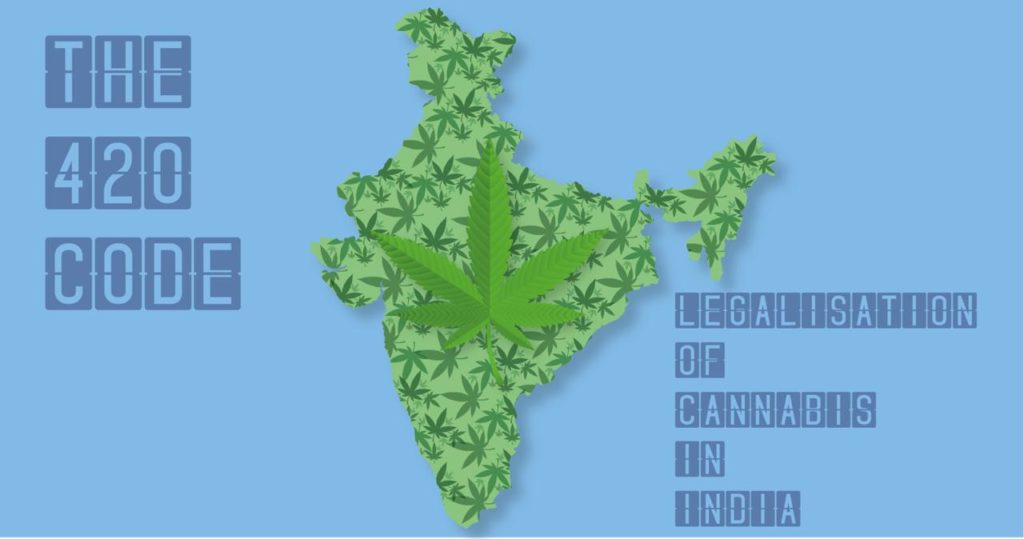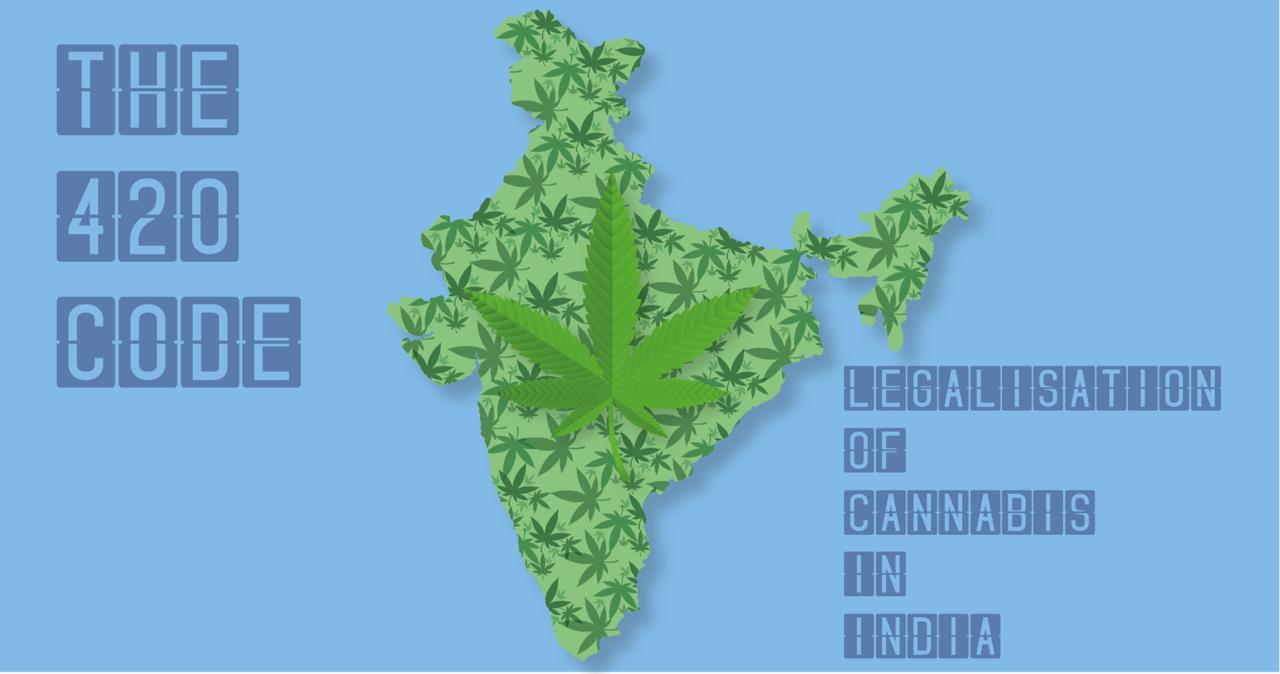
Bob Marley, one of the pioneers of reggae passed away on 11th May 1981. And as per his wishes, he was buried in Jamaica with these five items: his red Gibson Les Paul guitar, a Bible opened at Psalm 23 and a marijuana bud. After American rap icon Tupac Shakur’s murder, members of his music group mixed Tupac’s ashes with marijuana and smoked the concoction. Marijuana has been a buzz for a long time now.
About Cannabis
Cannabis, popularly known as marijuana, is a psychoactive drug, meaning it can change brain functions and alter one’s mood, awareness, copiousness, and conduct. The primary psychoactive ingredient in marijuana is delta-9-tetrahydro-cannabidiol (THC). Marijuana is not only used for recreational purposes, such as ‘getting high’, but it also has medicinal and spiritual uses.
Marijuana comes from the dried flowering tops, leaves, stems, and seeds of the Cannabis sativa (hemp) plant. It is believed to be native to India originating in a region just north of the Himalayas. The leaves are arranged palmately, radiating from a common centre.
The most common way of using marijuana is by smoking up in cigars and cigarettes. Other ways include inhaling through bongs, baked into foods, most typically brownies and the most recent method is vaping. In India, it is popularly made into a beverage called bhang. /
Cannabis has mental as well as physical effects. The onset of the effects is felt within a few minutes after smoking up but there can be a delay for about 2 hours if cooked and eaten. The effects last for two to six hours.
History of Cannabis
Cannabis has a long and lengthy history in India, veiled in legends and religion.
The earliest record of this can be found in The Vedas, as early as 2000 BC. In Indian society cannabis is widely used in the form of ‘charas’ (resin), ‘ganja’ (flower), ‘bhang’ (drink from flowers and leaves). The Rigveda mentioned cannabis as a source of joy-giver and liberating the person from fear and anxiety.
The spring festival of Holi, when Indians let their hair down by throwing colour on one another, is also when many people get high on bhang, derived from marijuana. It is either smoked or eaten in food. Lord Shiva has been frequently associated with bhang, as he has been depicted to discover cannabis leaves after a heated discourse with family. He has often been painted indulging in the sacred drink.
During the middle ages, the soldiers often gulped down a glass of bhang before entering the battlefield. It allegedly helped them gain the shrewd agility and courage to fight for the win. Even today, men come home after a long day to have some bhang and relieve their stress.
In short, cannabis has woven itself to become an integral part of the Indian culture and a trusted ingredient in traditional medicine.
The course of cannabis took a turn with the arrival of British rule in India. The British parliament enacted a tax on bhang, ganja, and charas in 1798, stating that the charge was intended to reduce cannabis consumption “for the sake of the natives’ good health and sanity”. By 1894, the colonial government completed an extensive and wide-range study of Hemp in India. The government came to the conclusion that its moderate use was safe and suppressing its use would be wholly unjustifiable.
Legalisation Status
With multiple pieces of research and rapid discoveries in science every other day, we have now come across the merits of cannabis in the fields of medicine. Cannabis can heal chronic pain, inflammation and sleep disorders. It also freezes and stops the spread of cancer cells and can alleviate the symptoms of multiple sclerosis and epilepsy. The United Nations will vote to remove cannabis from the list of harmful substances, following from the 2019 recommendations of World Health Organisations itself.
Legalisation
There were several attempts to criminalise the use of cannabis, both by the colonial rule and the Indian government.
The British government tried to ban the drug thrice in 1838, 1871, and 1877 but was eventually mooted.
India had been battling international pressure regarding the legalisation of cannabis. The growing of the marijuana industry and its incredibly low price posed a threat to the liquor and tobacco lobby. Also, the US had been campaigning for a global law against all drugs, both hard and soft.
Eventually, in 1961, the international treaty Single Convention on Narcotic Drugs classed cannabis as a hard drug. During the negotiations, the Indian delegation opposed its intolerance to the social and religious customs of India. The treaty gave India 25 years to curb the extensive use of these recreational drugs. Hence by 1985, the government passed the Narcotic Drugs and Psychotropic Substances (NDPS) Act that prohibited a person to produce/manufacture/cultivate, possess, sell, purchase, transport, store, and consume any narcotic drug or psychotropic substance. The production of Cannabis flowers and resins were banned, but the use of its leaves was allowed.
From 2015, there were several attempts made by various medical organisations to revoke the ban on cannabis.
Why should it be legalised?
One of the main psychoactive compounds in Cannabis that is responsible for the ‘euphoric’ sensation is tetrahydrocannabinol (THC). The second most prevalent and active ingredient found in Cannabis is Cannabidiol (CBD). CBD is a non-psychoactive compound that counteracts the euphoric sensation produced by THC.
Since CBD reduces the chances of getting a ‘high’, marijuana in recent times is grown with higher levels of THC and lower levels of CBD.
There is no difference between medical marijuana and recreational cannabis apart from their use.
CBD, one of the mainly used ingredients in cannabis, also has several medical uses. Medical marijuana is used to treat various conditions such as Alzheimer’s, cancer, Crohn’s disease, eating disorders such as anorexia, epilepsy, and glaucoma. It is also used for the treatment of several mental health disorders like schizophrenia, post-traumatic stress disorder (PTSD), stress disorder and cachexia.
India’s First Cannabis Clinic
India is one of the biggest consumers of Cannabis, yet it remains illegal in India. Marijuana also finds mentions in ancient Ayurvedic scriptures and texts to cure almost everything. The Narcotic Drugs and Psychotropic Substances (NDPS) Act which prohibits the use and sale of the flower and resin parts, allows extracting CBD and THC from hemp seeds and leaves for their medicinal benefits.
Vedi Wellness Centre, India’s first medical cannabis clinic in Koramangala, opened its doors on 1st February. Launched by an Odisha-based start-up HempCann Solutions, it offers Ayurvedic and herbal tablets and oils made from the plant. HempCann has been approved by the US Food and Drug Administration—a federal agency for health and human services and they have a pan-India license.
“The THC takes care of the inflammation and pain, while the CBD works to boost your body’s immunity, thus completely curing the illness instead of the patient being dependent on a class of drugs to function normally. Herbal remedies backed by traditional, ancient texts and validated by the principles of modern scientific product development are not addictive and have no side-effects.”
—Aayushman Narayan (from HempCann)
The question that comes up now is, ‘was this a good step?’
As with all things, there are two sides to this dice- the positives and the negatives. (coin?)
With cannabis being an effective medical drug, the argument towards the legalisation of medical marijuana is devoid of cons. The legalisation of cannabis would also allow for greater regulation. It gives the chance to have it be sold with a list of all active and inactive ingredients, purity levels, warnings and other useful information for the user. The TCH and CBD levels in the drug could also be controlled with its legalisation.
In a much more money-minded take, the legalisation of cannabis is also going to help boost the economy. The tax gains would come from tax revenues on cannabis sales and savings to the justice system- including the cost of keeping users in jail.
Prohibition of drugs is not the answer. It just makes these substances stronger and more potent such as in the case of the American ‘war on drugs’, where alcohol was prohibited throughout the United States. Although the rate of consumption fell subsequently in the beginning, it quickly rose up to levels higher than before. Alcohol became extremely dangerous to consume.
When drugs are prohibited, it affects the state and its people in more than one way. In times of a ban, people turn to the black market, where your monetary cost is extremely high. On top of that, it has a social cost- ranging from public shame to small offences worth a mere fine to a prison sentence.
There are also other negative aspects, such as losing one’s job, social status and so on. At most times, people receive low-quality drugs that can be much more harmful at extremely high rates.
Prohibition also encourages younger generations to try these substances- when something’s not allowed, it is all the more enticing to try out. Instead of that, the legalisation of these substances and education of their effects should take place.
In a study, ‘2018 Cannabis Price Index’, conducted by ABCD, Delhi was revealed to be the third-highest consumer of cannabis in the world, right behind New York and Karachi. Mumbai placed sixth- for perspective, Amsterdam, a country where cannabis is legal- placed at 56th.
Cannabis cannot be eradicated from the country, but it can be made safer.
—Written by Tanya Jain, Aakanksha Mantri and Alankriti Singh for MTTN
— Featured Image by Sara Dharmik

Leave a Reply
You must be logged in to post a comment.